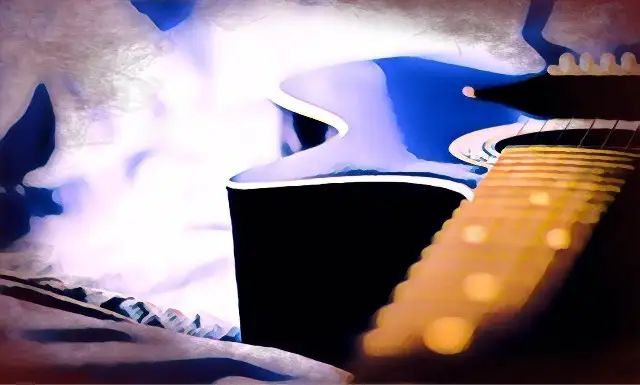So you've learned about major and minor chords , and maybe you've even used diminished or augmented chords. Though less widely discussed, suspended chords (often referred to as sus chords), are a powerful chord type every musician should understand.
There is no reason to get suspicious-- we'll decode everything you need to understand about this powerful chord type below! Let's go ahead and unpack everything you need to know about sus chords so you can start incorporating them into songs of your own.
Supsended Chords: What Is a Sus Chord?
A "sus" or suspended chord is a triad that's built with a tonic, fifth and either a major second or perfect fourth scale degree. The second or fourth note help create tension as opposed to fully open chords without giving away tone quality. Sus chords are often played on guitar or piano, but they can be performed with any three qualifying notes on any instrument.
Since suspended chords don't have an established major third or minor third, you cannot tell if a sus chord was meant to be used in a major or minor context. This builds opportunities for creating movement, space, and atypical sonic structure across the course of a song. Musicians also often use suspended chords as a transition to the next chord in the progression.
You can hear the unique tone quality of both sus2 and sus4 chords in Tom Petty's Free Falling :
Sus2 or Suspended 2nd Chords
A sus2 chord is a chord consisting of a major second, root note, and fifth. Let's take the D major scale for example: D E F# G A B C#. While the traditional D major chord would be D F# A, a sus2 D chord or Dsus2 would be D E A.
Hear a golden example of sus2 chords in Things of Gold by Snarky Puppy:
Sus4 or Suspended 4th Chords
Sus4 chords tend to be a bit more common than their sus2 counterparts. In this structure, you have the root bass note, a perfect fourth, and the fifth to complete the triad. If we use the D major scale again, we can build a Dsus4 with the three notes D G A.
Hear Sus4 chords in the intro of Crazy by Gnarles Barkely, where the Gsus4 transitions to a G major chord:
When Do I Sus Chords?
Sus chords are incredibly powerful due to their ambiguity from the second note in the chord. Having this ambiguity opens the door to new sonic possibilities, lending sus chords to genres as far ranging from classical music to jazz to modern pop.
You've likely heard sus chords in your lifetime, even if you can't identify them (yet) on paper. Here are several reasons why musicians use sus chords in their music:
Tension
Sus chords create tension since the 2nd and 4th scale degrees, used in sus2 chords and sus4 chords respectively, are more dissonant than the usual major or minor third in a traditional triad. This tension can be manipulated to draw a listener in or out of a section. In classical music, sus chords were used to create more of a sense of resolution by building tension before the final resolve of a note.
Transitions
You'll often hear sus chords expressed as transitions within chord progressions. Since sus chords are by definition just one note away from a traditional major or minor chord, it's easy to see why suspended chords make great passing chords in a progression.
Space
Since sus chords only define the root note and fifth of the song, you don't have a strong sense of major or minor key. This space provides more room to play around with the sonic structure of a song. Therefore, using sus chords in your backing chord progression allows you to build more depth within the context of the composition, should you want to build something a little more ambiguous.
Sus Chords FAQ

Suspended chords are a lot less complicated than you may think. Check out these commonly asked questions and answers to help you better understand suspended chords as a whole.
What does sus mean for chords?
A sus chord is a triad that does not have the third interval within the triad. The third note of a scale defines major chords and minor chords, so a suspended chord has a distinct ambiguous quality.
What is a sus2 or sus4 chord?
Sus chords or suspended chords are named after the note that's included in the triad outside the first and fifth scale degrees. Sus2 chords include the second scale degree while sus4 chords include the fourth scale degree alongside the tonic and the fifth.
What are the sus chord progressions?
Sus chords are often used in chord progressions as transitions from one key to the next to create and release tension across a chord progression. You can hear sus chords in plenty of popular songs like Ticket to Ride by The Beatles or More Than a Feeling by Boston.
Why do sus chords sound good?
Sus chords create an ambiguous feeling, creating a sense that a single chord can be both a minor chord and major chord at the same time. This openness can sound amazing to our ears, making space for endless sonic possibilities.
Understanding how sus chords work makes it easier for you to coast between major and minor chords in your songs. These specialized triads open up a whole new palette of sounds, giving way to genres as diverse as modern jazz to progressive rock. Have fun manipulating sus chords in your next song!





